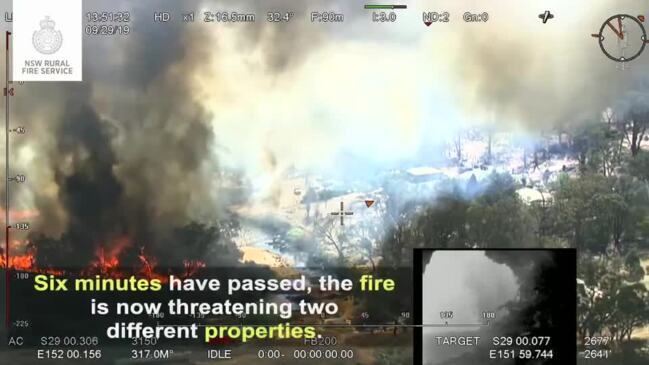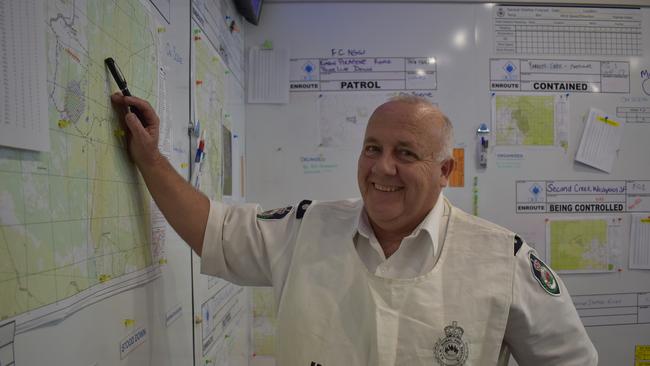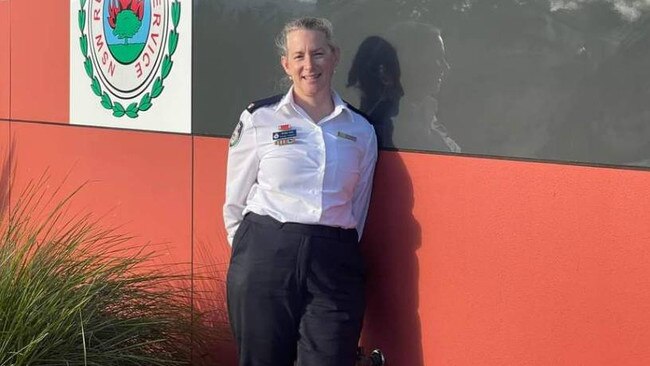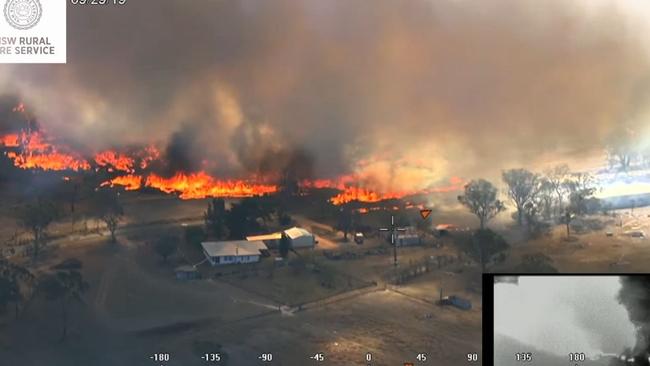Rural Fire Service experts warn of bushfire threat in northern NSW despite wet start to season
The wet start to the year in northern NSW may not be the blessing it seems when it comes to fire season, firefighters warned after a dramatic video was released.

Community News
Don't miss out on the headlines from Community News. Followed categories will be added to My News.
A stormy start to the year may ease bushfire concern for some residents, but firefighters are urging northern NSW residents to remain vigilant.
Rural Fire Service (RFS) Clarence district manager Superintendent Stuart Watts said extensive rainfall in the region has complicated matters.
“We’ve seen very prolific grass and hay growth which creates a hazard,” he said.
Mr Watts said the excessive growth could provide volatile fuel to help a fire take off in an instant.
“It wouldn’t take much of a spark to get a grass fire growing – which can quickly spread,” he said.

Mr Watts assessed fire danger in the Mid North Coast region as moderate at the moment – but warned the situation could change quickly if weather patterns shift.
“A few weeks of dry weather – coupled with low humidity and wind and we’ll have elevated danger,” he said.
Mr Watts said the community should be aware of ongoing risks until April.
“There’s a really good body of seed around that is volatile and doesn't take much to ignite,” he said.
Mr Watts’ comments came as the Rural Fire Service shared helicopter footage from northern NSW in 2019, during the harrowing 2019–20 Australian bushfire season. .
The video demonstrates the terrifying speed a spot fire can develop into a destructive grass fire.
Having battled the 2019 bushfires himself, Mr Watts said he and his crew were still in awe at the speed the fire in the footage expands.
“We were amazed at how quickly it moved – once it gets going the intensity goes from zero to ten in five seconds,” he said.

Mr Watts said heavy rain also meant hazard reduction work had been greatly impeded – meaning there was plenty of fuel for a fire in the region.
He said recent flooding as well as the dry spell the region experienced in 2021 impeded reduction efforts.
“It went from being too dry to do hazard reduction, to Covid – which restricted operations – to flooding,” he said.
Mr Watts urged residents to take action to reduce hazards by cleaning gutters of properties and ensuring individuals and families have emergency plans in place
There has already been 150 grass fires recorded in NSW since the start of the year.

RFS Inspector Sandra Huer from Coffs Harbour worried the rain brought on complacency.
“Even despite the rain we can still get fires and storms bring in lighting,” she said.
Ms Huer said owners of rural properties should be particularly aware of lightning as it could easily ignite grass fires.
Since July 1 last year, 3433 fires have been recorded in NSW.
The RFS called on communities to:
- Have up-to-date smoke alarms.
- Check fire danger ratings in their area.
- Have a plan in the case of a bushfire.
- Read information on the RFS website to become educated about fire danger.
- Consider calling RFS about controlled burning near your property.
- Not overcharge lithium-ion batteries or allow them to overheat
- Always use compliant and approved charging stations/equipment




